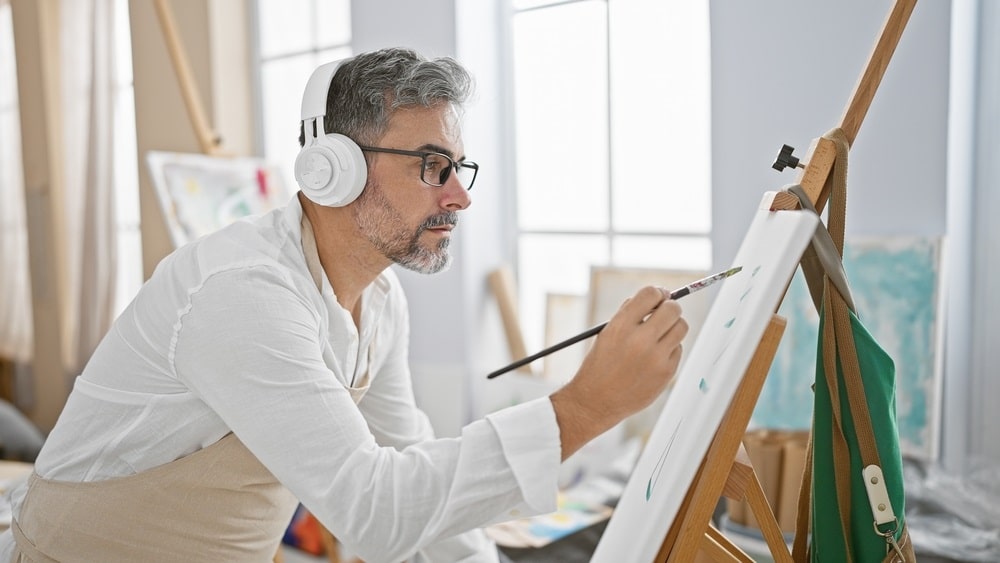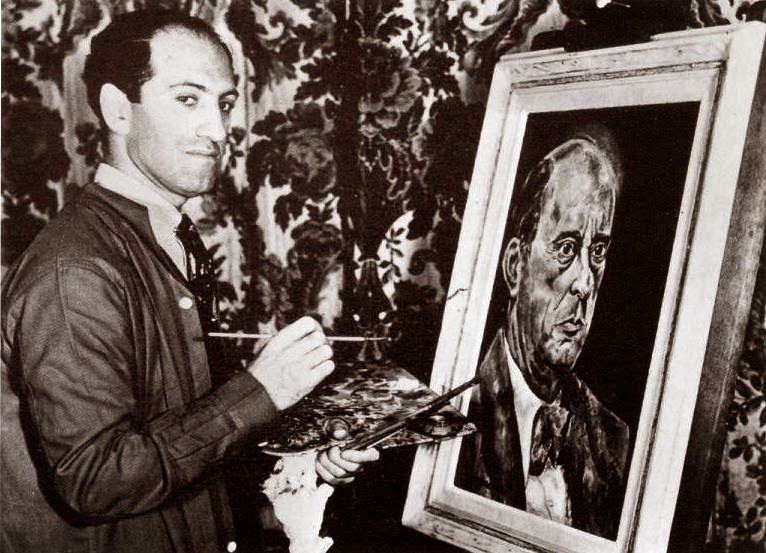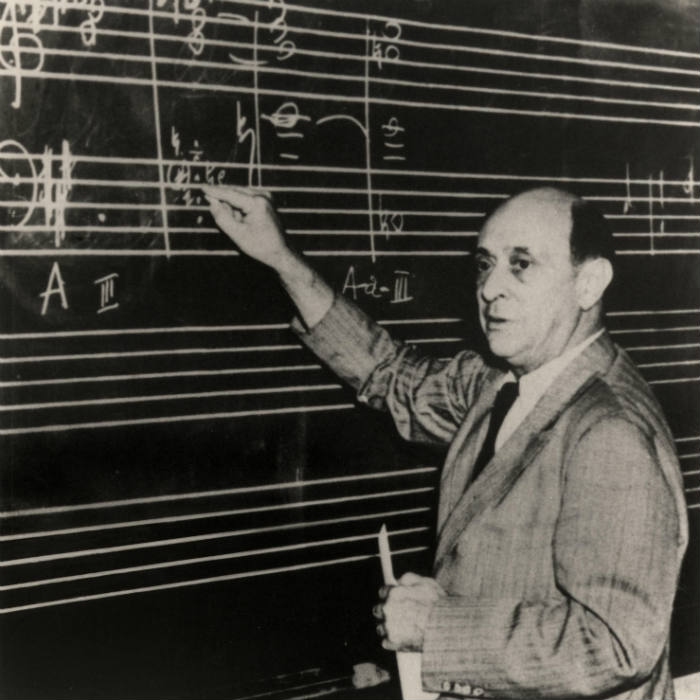
For me, one of the most rewarding aspects of continually learning and exploring the world is the links that are often unearthed on that journey.
Sometimes it’s by deliberate and determined searching, other times, and these are the best, when it just happens. At these infrequent moments, I find it is as if a little spark traverses my mind running between previously unconnected areas.
Without the intention to exclude vitally important subject areas, it is through my lifelong exploration of The Arts that I have discovered connections that sometimes bring about profound personal change.
They illuminate, inform, and invite, opening up uncharted territories (for me at least), that I love to indulge in. The bond between Classical music and the visual arts is not in the least illusive, but equally one that presents fascinating possibilities for us all to enjoy.
Classical Music and Visual Arts
Before we delve deeper into these two arts, let’s take a sideways step into science. Scientists spend a considerable amount of time creating theories and hypotheses.
The hypothesis is speculative, followed by the theory, which substantiates the hypothesis based on evidence. The empirical evidence usually needs to be tested with sustained repeatable outcomes.
The Link Between Visual Perception and Classical Music
Findings in 2014 from the University of Glasgow paper suggest tangibly strong links between our visual world and our auditory one. Our visual cortex is not only stimulated by sight but also by sound. The visual element of our cortex relies quite significantly, according to the research, on what we hear.
One lovely example is that if we were to hear the sound of a horse’s hooves trotting along near to us but out of sight, we’d anticipate seeing a horse once it came around the corner, not a motorbike. In this way, we can understand how important and close the relationship is between sight and sound to how we perceive the world.
Professor Lars Muckli (Institute of Neuroscience/Psychology; University of Glasgow) says that “sounds create visual imagery, mental images, and automatic projections.”
With the use of fMRI (Magnetic Resonance Imaging), it has been possible to pinpoint specific patterns of activity in the visual cortex that leave us in no doubt about how visual and auditory stimuli are vital to how we function as human beings.
Whether you’re scientifically minded or not, what we learn from this discovery leads neatly into an exploration of the connections between visual arts and Classical music. With science supporting the supposition, there is a more assured pathway forward.
Both Classical music and the visual arts are expressive forms. Often there is an emotional content or inspiration behind these works of art. It may not be immediately apparent and delightfully open to interpretation, but it is often there.
Even in more abstract work, it’s a rare occasion to find no emotional response at all. It is not surprising to learn that composers have been inspired by paintings, just as painters, for example, have been moved and motivated by a piece of Classical music to create visual art.
The Influence of Music on Color Choices and Painting Techniques
An interesting suggestion is made by some painters that depending on the music that they are listening to, either before or perhaps during painting, can greatly influence the colors they choose.
Some go further to claim that music with strong rhythmic elements and a dominance of bass frequencies edges the artist towards saturated darker tones. By contrast, slower, less frenetic music can persuade painters to engage the pastel palette.
Painting techniques can also be influenced by the type of music experienced. Depending on the pace and energy of a piece, painters may change their brush strokes and choice of forms.
Softer sounds parallel to rounder shapes, whereas, dissonant, harsher music could prompt larger strokes of the brush and angular forms.
If we consider some of the ways of describing a piece of Classical music, for instance, we commonly refer to tonal shades. These are created by the composer largely through the choice of instrumentation and the blending of those choices.
For some composers, how a chord is voiced across an orchestra or ensemble happens in direct relation to the color they feel.
The Fusion of Classical Music and Visual Art in Artists’ and Composers’ Works
Olivier Messiaen was one such composer who gave detailed explanations of his synaesthesia. Messiaen was able to give very precise color mixtures unique to him that related directly to his music.
Wassily Kandinsky and Arnold Schoenberg
Wassily Kandinsky’s association with synaesthesia has been covered by many academics. Whether or not he was synesthetic seems unclear, but his body of paintings provides strong evidence that he was trying to fuse his art with music in his inimitable style.
He was aiming to create a multi-sensory experience for the viewers of his work. Kandinsky didn’t limit himself to Classical music but strove to imbibe literature, music, and even theatre into his paintings.
Kandinsky and Arnold Schoenberg were relatively close in a collegial sense. Each was on a quest for new methods of expression that required a new language.
For Schoenberg, this meant disposing of the traditional tonal system in favor of a 12-tone process of composition that gave equal weight to each note of the chromatic scale. This, in one magnificent action, removed the tonic/dominant, key-centred essentials of tonality.
In so doing, Schoenberg unleashed a tide of unimaginable dissonance that to this day can be challenging to listen to.
In tandem, Kandinsky’s work reflected and absorbed Schoenberg’s thinking. The appearance of apparently random collections of colors and forms that are unrelated appears in his works.
Just as Schoenberg’s tone rows are meticulously constructed, so in fact were Kandinsky’s colours even if to the unfamiliar eye they seemed arbitrary. Another clearly Schoenberg-inspired work is Impression III: Concert.
Paul Klee
Similar features permeate Swiss painter Paul Klee’s paintings. Interestingly, Klee was a child prodigy and a phenomenal young violinist. This was all before his astonishing career as an artist. Many of Klee’s works draw from the influence of Classical music.
May Picture (1925) offers us a good illustration of this connection where it is suggested that a multitude of beautifully colored squares are like a Baroque counterpoint.
Henri Matisse
Henri Matisse was a lifelong lover of Classical music. The works of Beethoven and Bach have inspired his art and Matisse. At his home, Matisse regularly held recitals such was his fascination with music.
Paintings such as La Bonheur de vivre or La Musique, a sketch that uses a violinist as the subject. In many of his paintings, Matisse even uses musical words. He also categorically felt that music, like the visual arts, required organization of force with colors as forces as in music.


